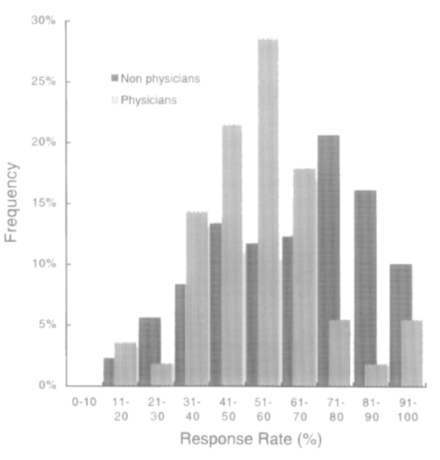
Response Rates to Mail Surveys Published in Medical Journals
Abstract
OBJECTIVE:
The purpose of this study was to characterize response rates for mail surveys published in medical journals; to determine how the response rate among subjects who are typical targets of mail surveys varies; and to evaluate the contribution of several techniques used by investigators to enhance response rates.
METHODS:
One hundred seventy-eight manuscripts published in 1991, representing 321 distinct mail surveys, were abstracted to determine response rates and survey techniques. In a follow-up mail survey, 113 authors of these manuscripts provided supplementary information.
RESULTS:
The mean response rate among mail surveys published in medical journals is approximately 60%. However, response rates vary according to subject studied and techniques used. Published surveys of physicians have a mean response rate of only 54%, and those of non-physicians have a mean response rate of 68%. In addition, multivariable models suggest that written reminders provided with a copy of the instrument and telephone reminders are each associated with response rates about 13% higher than surveys that do not use these techniques. Other techniques, such as anonymity and financial incentives, are not associated with higher response rates.
CONCLUSIONS:
Although several mail survey techniques are associated with higher response rates, response rates to published mail surveys tend to be moderate. However, a survey's response rate is at best an indirect indication of the extent of non-respondent bias. Investigators, journal editors, and readers should devote more attention to assessments of bias, and less to specific response rate thresholds.
Citation:
D.A. Asch, M.K. Jedrziewski, and N.A. Christakis, "Response Rates to Mail Surveys Published in Medical Journals" Journal of Clinical Epidemiology, 50(10): 1129-1136 (October 1997)